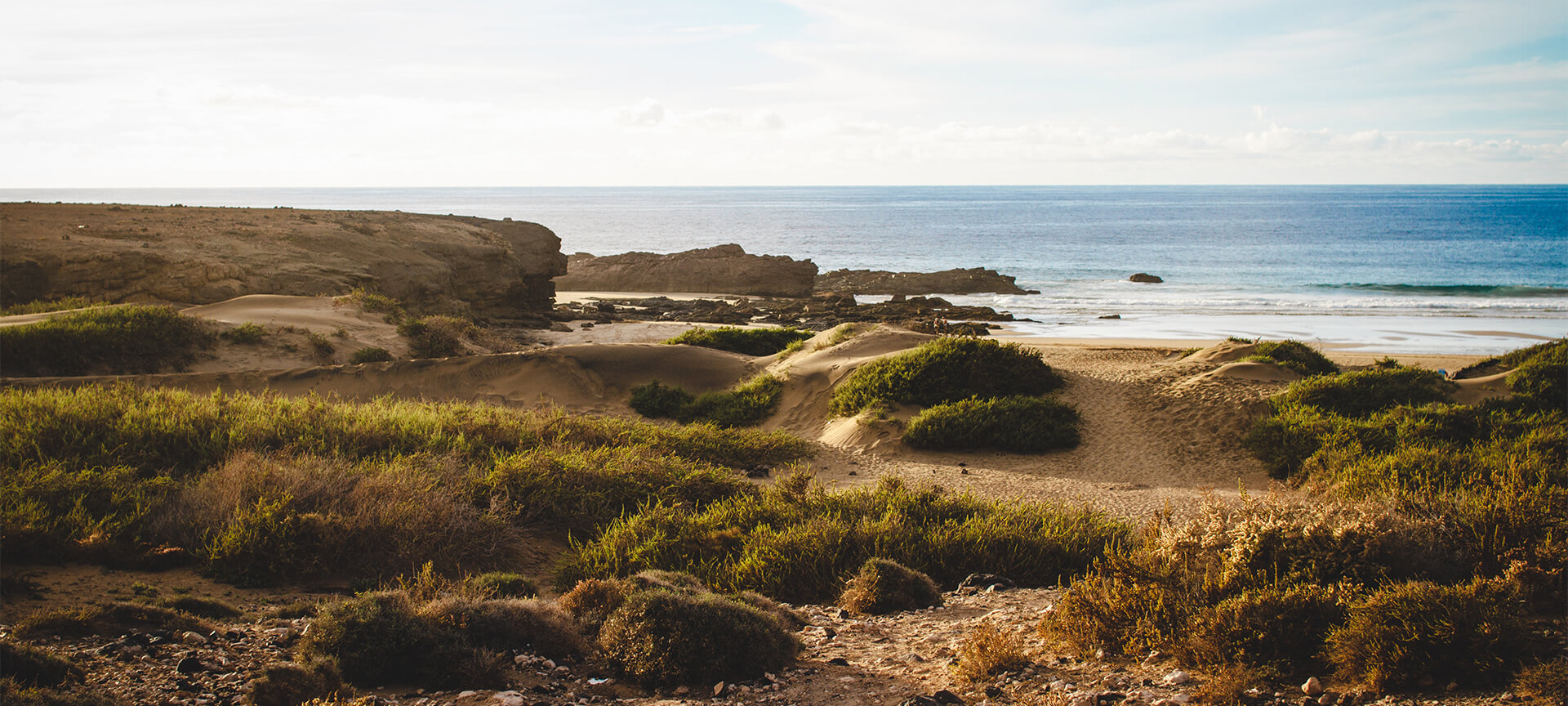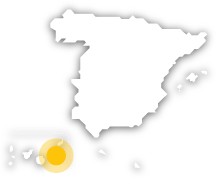
Jandía Natural Park

Between the beach and the mountains
The park occupies most of the Jandía peninsula, forming a body independent from the rest of the island's relief. Altogether, Jandía forms an almost untouched landscape, filled with highly valuable natural elements, making it one of the most precious and unique showcases of Canary Island nature.
Jandía Natural Park is located in the municipality of Pájara, on the island of Fuerteventura.The park is a land of contrasts. The dune landscape of the Isthmus of La Pared is almost hidden by the sands, although some ridges can be seen emerging from them. From the Pecenescal Valley onwards, the sands come to an end, and the landscape takes on a completely different appearance. On the northern slope, the Pico de la Zarza stands out as the highest point above sea level (807 m). The southern slope of this large mountain range is much gentler and wider, with hills, ridges and valleys.Most of Fuerteventura's most representative types of vegetation can be found in this area. As you ascend from the coast, tabaiba landscapes appear, and higher up, in the summits, the shrubs become more prominent. On the cliffs, there are plant species that stand out for their uniqueness. The park is also home to a rich variety of wildlife: Kestrels, stonechats, houbara bustards, common buzzards, Egyptian vultures and more. The park also features species like lizards, large psammodromus and the western Mediterranean gecko. The fauna is also enriched by a wide variety of invertebrates, mainly insects.
Debe activar Javascript para poder utilizar este servicio
Jandía Natural Park
Punta de Jandía Lighthouse (visitor centre)
Final de la carretera a Punta de Jandía
35625 Morro Jable, Pájara, Fuerteventura (Canary Islands)
Fuerteventura (Canary Islands):
Activa JS
What you need to know
-
Cultural information
In the municipality of Pájara, you can find vestiges of the aboriginal culture of these lands: dry stone houses and caves, used as homes, along with livestock structures that belong to the island's ancient inhabitants.
-
Environmental information
Its flora and fauna are home to numerous endemic species, as well as threatened and protected species. It is also the habitat for some bird species that are found exclusively here.
-
Information for visits
The visitor centre is located at the Punta Jandía lighthouse, on the southwest tip of the island of Fuerteventura.

